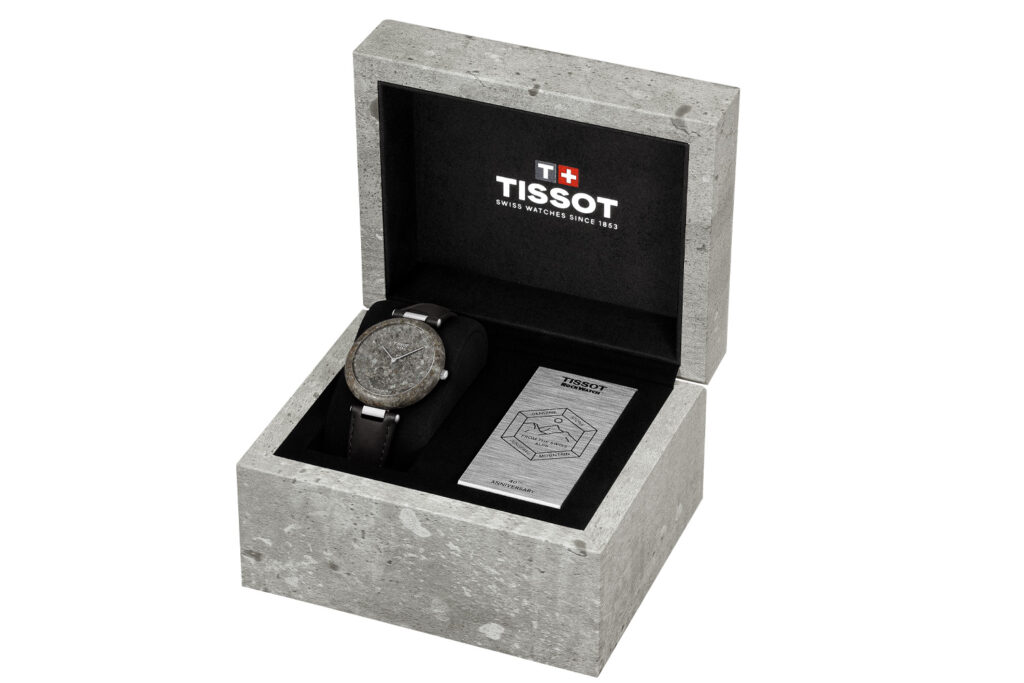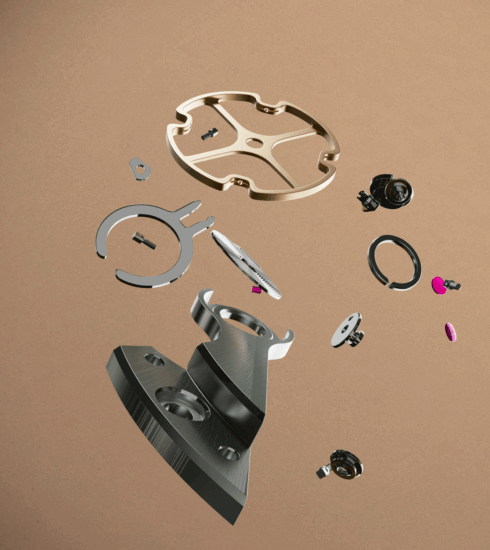A piece of Switzerland for the wrist - the "RockWatch" from Tissot is back
First introduced in 1985, the new "Rockwatch" still features a granite dial that also serves as the case. Limited to 999 pieces, this comeback represents the beauty of the Swiss Alps, Tissot's hometown.

From here – the 4,158-meter-high Jungfrau mountain peak in the Bernese Alps – comes the igneous rock (plutonite) used for the Rockwatch. This rock is formed when magma deep in the Earth's crust slowly cools and solidifies. This slow cooling allows the minerals to form well, giving granite its typical coarse-grained structure.
The stone extracted during the renovation of the Jungfrau Tunnel is delivered to the factory in large blocks. These are milled into cylinders, which are then divided into smaller segments to reduce internal stresses in the stone. This makes the material easier to handle during subsequent processing phases.
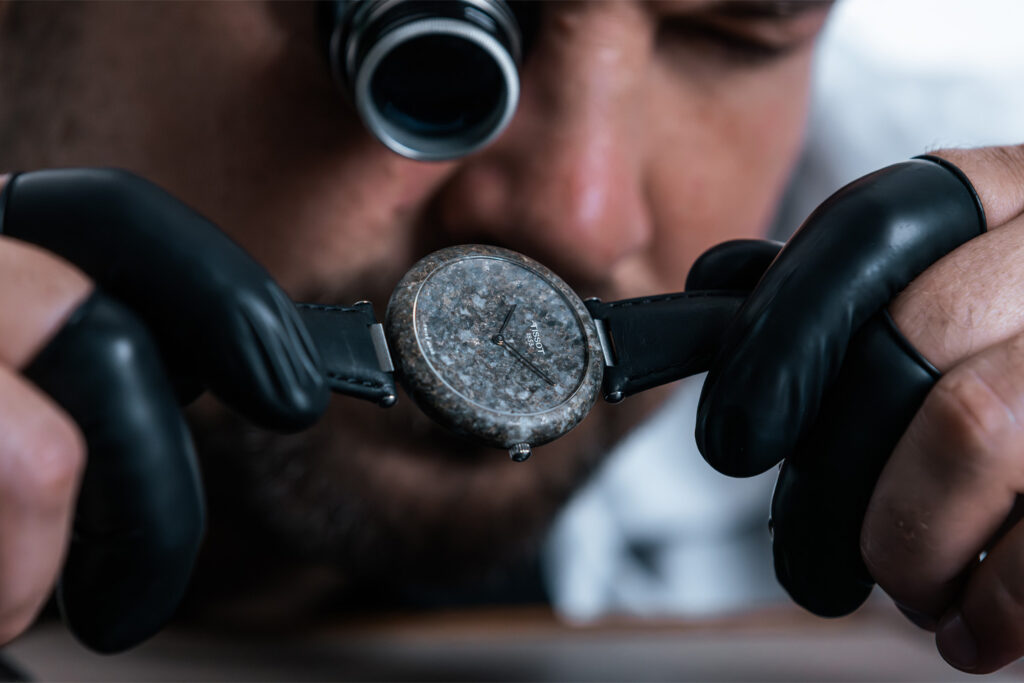
The same craftsmen who created the first edition back in 1985 are at work here. They continue to shape and refine the blocks, gradually approaching the final case diameter of 38 millimeters.
The granite undergoes a grinding process that uses controlled pressure and abrasives to achieve a smooth, uniform surface. To ensure each piece meets the most stringent dimensional specifications, the outer profile is carved using tools that allow for micrometer-level precision.

At this stage, the stone is ready for hollowing. This process is one of the most demanding steps in the entire production process. Technicians form the inner cavity with precision down to the millimeter. This cavity will house the movement.

To secure the case back and keep the movement reliably in place, a steel container is inserted into the stone case.
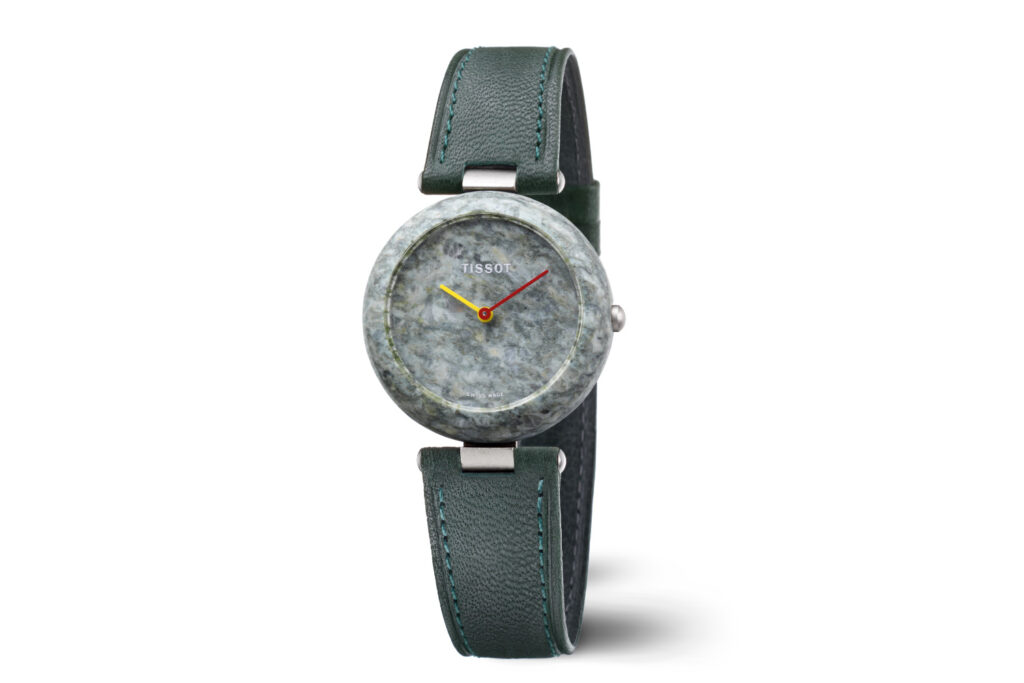
While the original "RockWatch" from 1985 featured red and yellow hands inspired by Alpine signposts, the new edition indicates the time with nickel-plated hands. The quartz 2 movement with end-of-battery indicator (EOL) ensures its precision.
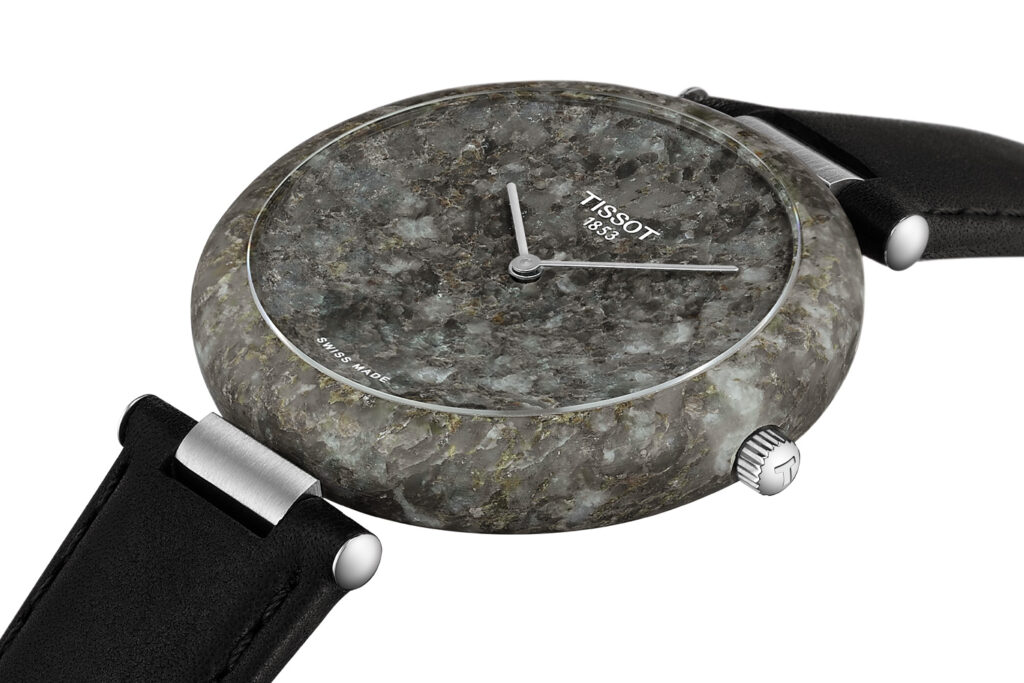
The "Rockwatch" is delivered in a special packaging modeled after a block of granite. (RRP €1,095)
